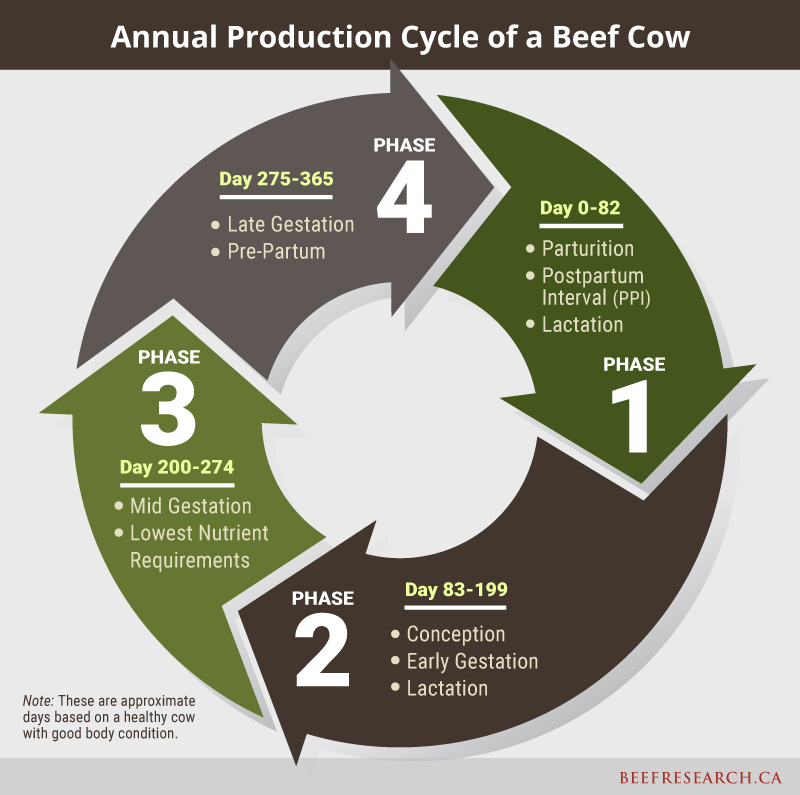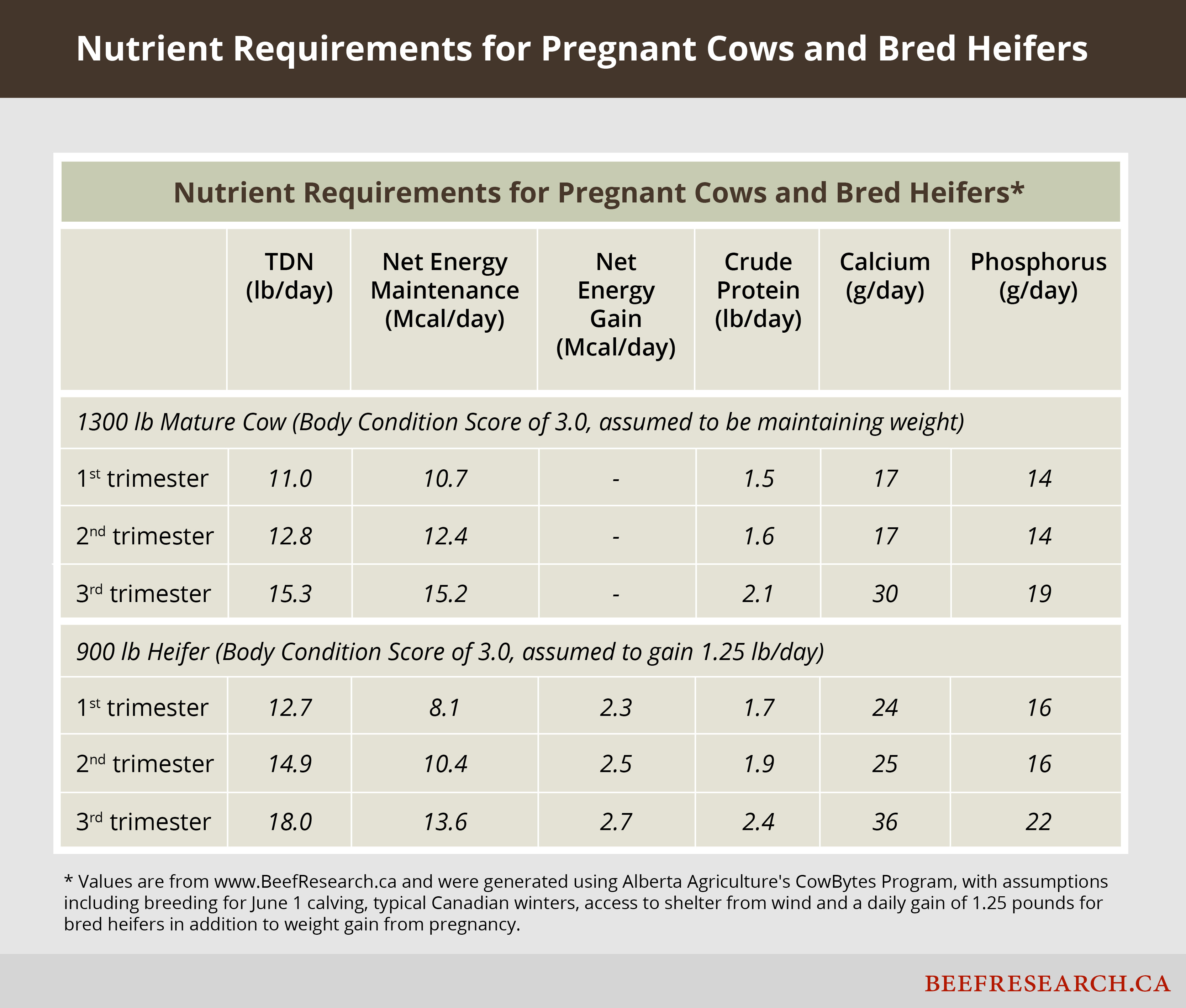Source: Beef Cattle Research Council, www.BeefResearch.ca
Stage of Production
Nutritional requirements of beef cattle are influenced by the stage of production. This production cycle, which is based upon a well-managed, healthy cow in good condition (Body Condition Score = 3) maximizes profitability by producing a calf every 365 days. The annual production cycle, based upon ideal length of time for each phase, includes:
- Calving, postpartum, early lactation (day 0 to day 82)
- Conception, early gestation, late lactation (day 83 to day 199)
- Mid gestation (day 200 to day 274)
- Late gestation, pre-partum (day 275 to day 365).
Phase 1 – begins at calving. This is the period of greatest nutritional demand for the cow. She must lactate, repair her reproductive tract, resume heat cycles, breed, and if she is a young cow, she must also continue growth and development. Her voluntary feed intake is highest at this point and as this blog explains, she requires a high energy and protein diet of at least 62% TDN and 11% CP. If she is not fed to meet nutritional needs, she will lose weight and may not rebreed.
Phase 2 – begins with conception. The cow is now supporting herself, her calf (through lactation) and her fetus. Nutritional demands are still high as she reaches peak lactation but are lowered by 8-13% compared to the first phase. Cows that produce more milk will have higher nutrient requirements. The fetus is small, and its growth is slow, but cows and heifers often lose weight during this time.
Phase 3 – is when the cow is in mid-gestation. Immediately after calves are weaned, nutritional needs are at their lowest due to the end of lactation. Energy and protein requirements drop by up to 35% when compared to the peak demand. Fetal growth remains slow, and voluntary feed intake is the lowest during this period. This is the best time to put weight back on cows to help them gain condition10. See the body condition information to learn more about how to ensure beef cattle are in ideal condition.
Phase 4 – is the final phase prior to calving, and cows must be in good body condition to give birth to a healthy calf, produce milk and re-breed quickly. Energy and protein needs increase by 20% compared to mid-gestation. During this period, the fetus can gain up to 60 pounds and the placenta is growing as well. Nearly 75% of fetal growth occurs during this phase11. Cows need to gain 0.5 kg (1 lb) to 0.68 kg (1.5 lbs) per day, while weight gain for heifers should target twice that amount. The cow has reduced rumen capacity due to the growth of the calf, so a reduction in feed intake usually occurs in the latter portion of this phase.
Producers often modify their feeding strategies during the annual production cycle of the beef cow to align with her energy and protein needs as she moves through the cycle. For example, lower quality feeds such as straw reduce costs during Phase 3, when the cow’s nutritional requirements are at her lowest. In Phase 4, as the rumen has less room for feed due to the growing fetus, she will benefit from higher quality feed such as good quality alfalfa hay or some grain to provide extra energy. A common rule of thumb is 55-60-65% for total digestible nutrients (TDN) and 7-9-11% for crude protein (CP) for early, mid and late gestation. More information on nutritional requirements can be can be found here.
Producers often divide the herd into different feeding groups to tailor the feeding program to provide an adequate level of nutrition. These groups may include:
Group 1 – Mature cows in good condition – Average quality hay supplemented with grain or pellets, minerals, fortified salt and vitamins, will generally meet the nutritional needs of this group.
Group 2 – Bred replacement heifers and second calf heifers – Young, growing animals do not compete effectively for feed with mature cows. Heifers require good quality hay, silage or alternative feeds, or grain to meet their needs for growth and development. These animals are still growing and gaining body weight, in addition to developing the fetus. These animals may benefit from organic (chelated) or hydroxy trace mineral supplements, which have greater bioavailability, to support growth and reproduction.
Group 3 – Thin, old cows – These cows will need extra energy, particularly during winter months. These cattle may benefit from additional vitamin and mineral programs to avoid deficiencies.
Group 4 – Yearling steers, bulls – Steers and bulls will require different feeding programs depending on their size and if they are on a maintenance program or are backgrounding or finishing.
If the ration is based on straw or low-quality hay, or if feed intake is limited, it is even more important to separate the herd into different feeding groups to match the nutritional needs of each group. Use feed testing and ration balancing software like Cowbytes to determine the appropriate ration and amounts of feed for each group.











